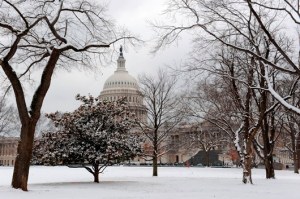
The summer our discontent behind us, the weight of inaction threatens anew. It is readily apparent from the most recent data that economic growth and labor market trends slowed markedly during July and August. Yet precious little has been accomplished over this same period to seriously assess or offset the deficiencies in the recovery.
Absent politicians in Washington calming down, or new private or public sources of stimulus, the near- and medium-term outlook for the economy remains clouded. Would that policymakers could approach the growth and employment conundrum with the same zeal—and occasional ferocity—as they approached the budget debates over the past few months, we might be in a stronger position two years after the recession reached its putative end.
Growth and Jobs
In the waxing days of summer, leading indicators of economic and labor market activity were generally improving, albeit at a frustratingly slow pace. In a late-May column for The Commercial Observer, I wrote that “the near-term outlook is still clouded by an unusual degree of uncertainty … this summer will prove critical in narrowing that uncertainty along several dimensions, including the direction of policies related to monetary interventions.” As for the potential of a budget impasse to upend the recovery, I hypothesized that “a failure on the part of Congress to reach a compromise will derail the economic recovery.”
In the months that have followed those assessments, the buffeting of consumer and business confidence by a dysfunctional policy environment at home and a recalcitrant debt crisis in Europe have brought growth to a standstill. Data for August, in particular, show that downside risks to the recovery remain real concerns and that we cannot dismiss the possibility of a relapse into recession.
The most recent estimate of second-quarter G.D.P. growth shows the economy expanding at an annualized rate of 1 percent. That falls short of the level required to motivate an uptick in private-sector hiring. Nor does it suggest improvements in local, state and federal revenues of an order that will alleviate the structural crises in public finance.
Second-quarter personal consumption expenditures registered their smallest contribution to growth in two years, with increases in spending on services undercut by a drop in auto purchases. Private investment increased at a moderate pace. Declining government spending, principally at the local and state levels and in federal nondefense areas, was a drag on growth.
For commercial real estate investors and lenders, the headline growth statistics are secondary to the data on jobs. Corporate profits in the second quarter were observably higher than during the prerecession peak but have not fueled hiring. Last Friday’s employment report showed the extent of businesses’ reservations toward ramping up expenses.
As expected, state and local government shortfalls are forcing cutbacks in these subsets of the labor force. At the federal level, and apart from current negotiations relating to the budget, public-sector payrolls will come under increasing pressure as the Postal Service edges closer to default. Without sufficient funds to meet September and October obligations—including a $5.5 billion prefunding contribution for retiree health benefits and a $1.2 billion payment for workers’ compensation, according to the National Association of Letter Carriers—large downward adjustments in federal jobs may be just around the corner.
Controlling for government cutbacks, but including the impact of 45,000 striking Verizon workers, the establishment data show that private payrolls expanded by just 17,000 jobs, the weakest result since February 2010. One month does not constitute a trend, so let us return things to their broader context: there were more American jobs 10 years ago, in the middle of the 2001 recession, than there were last month.
An understanding of sector-specific employment trends can be instructive when assessing the commercial real estate outlook. Geographically, states like Texas have outperformed the national trends. The Northeast has also recouped losses, while large parts of California, the Midwest and the Southeast are continuing to struggle. In some of the industries that are most closely associated with office space demand, the trends are nuanced. Professional and business service jobs have rebounded, but a large part of the increase has been in administrative and temporary services. At the national level, financial services employment has stagnated.
What’s Gone Wrong and How to Fix It
The assessment of the faltering jobs recovery is cannon fodder for today’s political ideologues. That is deeply regrettable. Many businesses leaders report that uncertainties stemming from current legislative and regulatory priorities have made it difficult to invest in new employees or capital. And while productivity gains have slowed, uncertainty regarding the outlook for demand is also tempering firms’ hiring decisions.
Consumers are constrained in driving aggregate demand because of indebtedness and limited access to new credit. A healthier job market might support consumer activity, but the circularity of household consumption and employment is self-reinforcing.
To trigger a virtuous cycle, policymakers might turn their attention to reducing businesses’ hiring and employment costs. But such directed efforts will not, by themselves, spur new hiring if the entropy of the public-private interface does not abate. For an administration and Congress that are viewed as increasingly ineffectual and prone to puerile squabbling, committing to a sense of normalcy in the balance of government and private roles will be as important as any active policy interventions.
dsc@chandan.com
Sam Chandan, Ph.D., is president and chief economist of Chandan Economics and an adjunct professor at the Wharton School.


